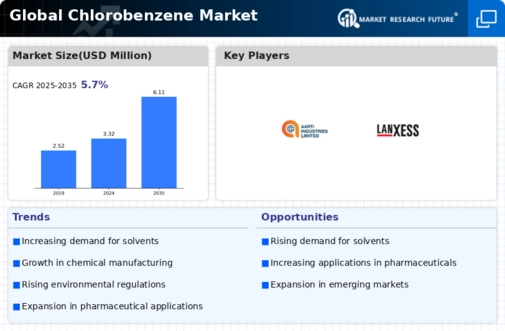Market Analysis
In-depth Analysis of Chlorobenzene Market Industry Landscape
The chemical industry’s crucial segment is influenced by numerous factors that collectively shape its dynamics such as the Chlorobenzene market. Benzene ring substituted with one or more chlorine atoms constitutes this aromatic compound that has extensive applications for producing different chemicals as well as intermediates. For instance; phenol and aniline which are essential in making plastics, resins including pharmaceuticals are some derivatives obtained from chlorobenzene demanded on a large scale justify its growth.
A bigger picture also includes supply chain dynamics which eventually make up entire industry contextually speaking about Chlorobenzene production costs that depend mainly upon benzene iron substitute chlorine being readily available cheaply. Consequently these principal ingredient prices may affect profit margins among manufacturers hence bring changes in the market. The global supply chain is also subject to geopolitical factors and trade policies that cause uncertainty in the chlorobenzene business.
Market dynamics of Chlorobenzene are shaped by technological advancements and innovations. Improved production processes, product quality as well as new uses are some of the research and development initiatives carried out on a continuous basis for growth purposes. For instance, catalytic processes have had influence on Chlorobenzene’s production cost leading to more sustainable techniques.
In addition, consumer preferences and trends shape the Chlorobenzene market. Therefore, people are increasingly demanding for eco-friendly alternatives as well as green chemistry practices because of their environmental consciousness. Consequently, manufacturers may be driven by this shift into adopting cleaner production methods for developing environmentally friendly chlorobenzene derivatives thereby affecting market dynamics.
These forces also vary within the Chlorobenzene industry depending upon factors such as: key players involved, their market shares or proportions and strategic moves like mergers, acquisitions alongside partnerships among others. Other external factors that affect pricing strategies, capacity utilization rates and overall competitiveness include considerations pertaining to emerging entrants having transformative products bring dynamism therefore creating fresh openings thereby influencing our business.
Environmental factors also influence the Chlorobenzene market. The understanding of specific chemicals’ ecological implications has hence spurred demand for sustainable practices and substitutes. Consequently, strategic players that have taken up green chemistry principles to pre-empt environmental concerns are expected to gain a competitive advantage thereby influencing market dynamics in favor of more sustainable operations.
Finally, it is worth noting that there are many things that affect the chlorobenzene market such as; economic conditions, regulatory landscapes, supply chain dynamics, technological advancements, consumer preferences and competitive forces. To successfully navigate the market and harness emerging opportunities while minimizing potential risks, stakeholders must have a clear grasp of these interrelated aspects.





Leave a Comment